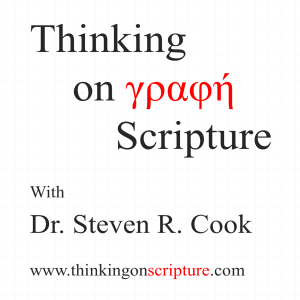
Saturday Jan 18, 2020
Introduction to Zechariah
Author:
The author of the book is Zechariah, “Zechariah the prophet, the son of Berechiah, the son of Iddo” (Zec 1:1). His name in Hebrew (זְכַרְיָה) means Yahweh remembers. Zechariah was a contemporary of Haggai and was important in encouraging the Israelites to rebuild the temple (Ezra 5:1-2; 6:14).
Audience:
Zechariah’s audience consisted of the Jewish returnees from Babylonian exile.
Date of Ministry:
Zechariah prophesied from 520-518 B.C. (Zec 1:1, 7; 7:1).
Historical Background:
Jerusalem and the temple were destroyed in 586 B.C. and most of the Israelites were taken captive to Babylon. Babylon was defeated by the Persians in 539 B.C. when Cyrus came to power. Cyrus was favorable to the Israelites and promoted their return back to Judah, which included the rebuilding of the temple (Ezra 1:1-4). Ezra chapter two records nearly 50,000 persons with positive volition who returned to Judah under the leadership of Zerubbabel the governor and Joshua the high priest (Ezra 2:2). Shortly after their return, in 536 B.C., many Israelites began reconstruction of the temple in Jerusalem and were able to lay the foundation stones and build an altar for sacrifice (Ezra 3:1-13). However, the reconstruction stopped because of local persecution, which discouraged the Israelites (Ezra 4:1-5, 24). The temple remained unfinished for sixteen years, until 520 B.C., when God raised up the prophets Haggai and Zechariah to encourage the Israelites to finish the work (Hag 1:1, 14-15; Zec 1:1, 7). The ministries of Haggai and Zechariah overlapped for a short period of time and proved effective in encouraging the people to reconstruct the temple, which was completed in 516 B.C. (Ezra 6:15). Note the following dates:
- August 29, 520 B.C. – Haggai’s first message (Hag 1:1)
- September 21, 520 B.C. – Temple reconstruction restarts (Hag 1:12-15)
- October 17, 520 B.C. – Haggai’s second message (Hag 2:1)
- October-November, 520 B.C. – Zechariah begins ministry (Zec 1:1)
- December 18, 520 B.C. – Haggai’s third and fourth message (Hag 2:10, 20)
- February 15, 519 B.C. – Zechariah receives eight visions (Zec 1:7—6:8)
- December 7, 518 B.C. – Zechariah delivers message to Bethel (Zec 7:1)
- March, 516 B.C. – Temple reconstruction finished (Ezra 6:14-15).
Zechariah’s Message:
The message God gave through Zechariah to the Israelites was encouraging and challenging. God wanted the temple rebuilt, and He also wanted the hearts of His people renewed. Previously, their forefathers had acted corruptly and violated the covenant, severely mistreating widows, orphans, strangers and the poor in the land; therefore, God sent them into captivity for 70 years. But now the returnees were coming back into the land and faced the challenge of rebuilding the city and temple, but most of all, He wanted them to live righteous lives, saying, “Dispense true justice and practice kindness and compassion each to his brother; and do not oppress the widow or the orphan, the stranger or the poor; and do not devise evil in your hearts against one another” (Zec 7:9-10), and “These are the things which you should do: speak the truth to one another; judge with truth and judgment for peace in your gates. Also let none of you devise evil in your heart against another, and do not love perjury; for all these are what I hate, declares the LORD” (Zec 8:16-17). Hopefully they’d learned the lesson of their forefathers and would walk humbly with God and do His will. “Zechariah’s vision of the future contained more than a rebuilt temple and a restored community. The later chapters in Zechariah look forward to the coming of a humble ruler from the house of David. The New Testament writers saw the fulfillment of this prophecy in Jesus (Zech 9:9–11; Matt 21:5; John 12:15).”[1] Zechariah provides much information about the future Messiah. “He presents Messiah as a king (9:9), a stone (3:9; 10:4), a slave sold for thirty pieces of silver (11:12), the smitten shepherd (13:7), the Branch (3:8; 6:12), and the glorious Redeemer and Ruler of Israel (14:1–4, 9, 16–17).”[2]
Outline:
The book of Zechariah is basically divided into two parts. “Chapters 1–8 contain carefully dated visions and sermons, while chapters 9–14 consist of undated poetic oracles and narrative descriptions of judgment and blessing.”[3]
- Introduction (Zec 1:1-6)
- Eight visions (Zec 1:7—6:8)
- Crowning of Joshua the high priest (Zec 6:9-15)
- Four prophetic messages (Zec 7:1-8:23)
- Oracles about Messiah and the future of Israel (Zec 9:1—14:21)
[1] John D. Barry et al., Faithlife Study Bible (Bellingham, WA: Lexham Press, 2012, 2016).
[2] Warren W. Wiersbe, Be Heroic, “Be” Commentary Series (Colorado Springs, CO: ChariotVictor Pub., 1997), 83.
[3] D. Brent Sandy, “Zechariah,” in CSB Study Bible: Notes, ed. Edwin A. Blum and Trevin Wax (Nashville, TN: Holman Bible Publishers, 2017), 1451.
No comments yet. Be the first to say something!